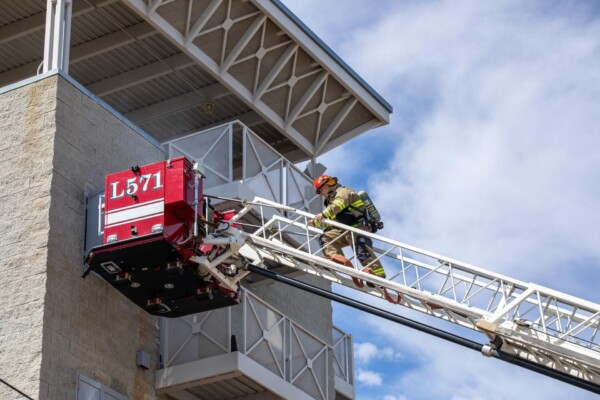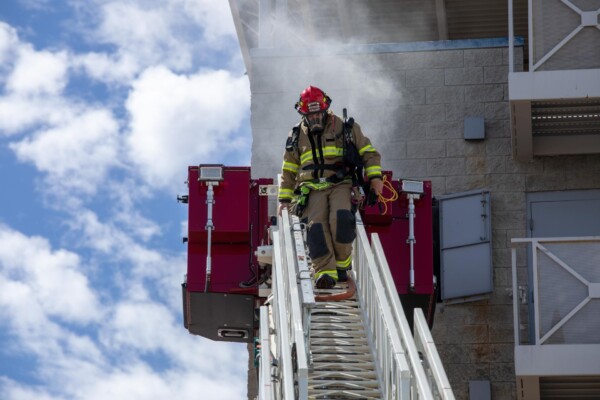![Ladder 571 training scenario recently. [Monica Williams - City of Maricopa] Ladder 571 training scenario recently. [Monica Williams - City of Maricopa]](https://www.inmaricopa.com/wp-content/uploads/2023/04/fire3-696x464.jpeg)
The past five years have been transformational for the City of Maricopa as the population has risen to more than 70,000 residents. As new homes, businesses and roadways sprawl out along John Wayne Parkway, residents can expect to see some of that growth reach for the sky; not just the adjacent plots waiting for the next developer.
“It’s possible within the next 10 years that we could see proposed plans and buildings reaching upwards of 150 feet high,” said Rudy Lopez, Maricopa’s director of Development Services.
That’s as tall as a 14-story building. Right now he says, the city has approximately 15 commercial buildings that are two stories or more. The most recent to open was Maricopa High School. Lopez said the city will add two additional multi-story structures by the end of 2023, Copa Flatz and Flatz 520, both reaching at least three floors.
As Maricopa reaches for the clouds, firefighters with the City of Maricopa Fire/Medical Department are tasked with being able to keep up.
“When the bigger buildings come,” said Assistant Fire Chief Chris Bollinger, who oversees the department’s training and operations, “We’ll be ready because we already train for fires and emergencies in mid-rise and high-rise buildings.”
A mid-rise building is any facility between three and seven stories. A high-rise is anything beyond that. Crews with the Maricopa Fire/Medical Department have been training for these types of structures since they joined the Chandler Regional Public Safety Training Center in 2007.
“Just this past week our crews were training alongside other valley departments on mid-rise fires,” Bollinger said. “That includes knowing how to position our ladder trucks most effectively in order to make entry, locating water sources, navigating stairwells with little to no visibility, and working as a team.”

He said fires, rescues and even medical emergencies become more complicated in mid-rise buildings.
“All of the dangers of a house fire are present such as high heat, zero visibility and deteriorating structural integrity, but now spread out across multiple floors,” Bolinger said. “Our crews have to know how to go into a situation and act fast, but safely and efficiently, and get out. That is why we have been training these scenarios for years.”
This training is crucial to teach those instincts to our firefighters so they can react faster because seconds could mean lives.


![3 things to know about the new city budget Vice Mayor Amber Liermann and Councilmember Eric Goettl review parts of the city's 2024 operational budget with Mayor Nancy Smith on April 24, 2024. [Monica D. Spencer]](https://www.inmaricopa.com/wp-content/uploads/2024/04/spencer-042424-preliminary-budget-meeting-web-218x150.jpg)






![MHS G.O.A.T. a ‘rookie sleeper’ in NFL draft Arizona Wildcats wide receiver Jacob Cowing speaks to the press after a practice Aug. 11, 2023. [Bryan Mordt]](https://www.inmaricopa.com/wp-content/uploads/2024/04/cowing-overlay-3-218x150.png)



![Alleged car thief released without charges Phoenix police stop a stolen vehicle on April 20, 2024. [Facebook]](https://www.inmaricopa.com/wp-content/uploads/2024/04/IMG_5040-218x150.jpg)

![3 things to know about the new city budget Vice Mayor Amber Liermann and Councilmember Eric Goettl review parts of the city's 2024 operational budget with Mayor Nancy Smith on April 24, 2024. [Monica D. Spencer]](https://www.inmaricopa.com/wp-content/uploads/2024/04/spencer-042424-preliminary-budget-meeting-web-100x70.jpg)


